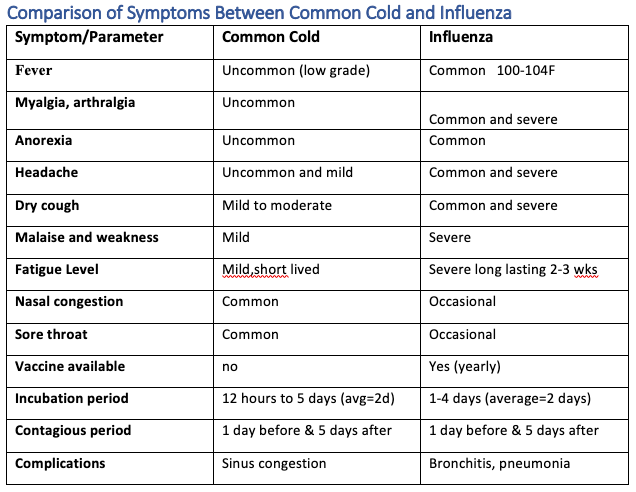If Fayette county with the changing seasons we think of the holidays of Thanksgiving, Christmas, and New Year’s. At Nickman’s we see these three holidays as family gatherings where germs are exchanged from near and far! Flu season starts in October and November and greatly increases in December and January with the highest peak occurring in February in the Northern Hemisphere. Here are some flu basics that we need our patients to become familiar with.
§ Flu is caused by an RNA virus of the orthomyxovirus family. Viruses are truly not alive, but “take over” a cells machinery to reproduce
§ Antigenic drift: Frequent minor changes in antigenic structure of the virus. This can reach epidemic proportions, but not every year. This is what requires minor adjustments in the vaccine formulation.
§ Antigenic shift: Major change in one or both major antigens in Influenza-A resulting in different subtype. This can result in major pandemics in all ages.
Influenza-A
- Causes moderate to severe disease in all ages and can be transmitted in other animals.
- Most associated with global pandemics
- Three subtypes of Influenza A have maintained a presence in the human population:
§ H1N1, H1N2, and H3N2
§ Note: Avian flu is the H5N1 subtype which is infamous for its transmission from infected birds to humans.
Influenza –B
§ No subgroups.
§ Only affects humans and causes a milder disease usually in children.
Influenza-C
Rarely reported in humans. Does not cause significant infections in humans.
INFLUENZA:
§ Major complication is pneumonia, Reyes syndrome, worsening of chronic bronchitis and death.
§ Rates of disease highest in elderly (over 65 years old), less than 2 years of age, and people of any age with medical conditions.
§ Penetrates the epithelial cells of the respiratory tract and destroys the host cell.
§ Virus is shed in respiratory secretions for 5 to 10 days, and transmission is through direct person to person droplet contamination or contact.
§ Incubation period is approximately 2 days
§ Clinical features: abrupt onset, fever, muscle aches, sore throat, nonproductive cough, headache.
§ Disease peaks between December and March in the Northern Hemisphere.
§ One of the leading causes of vaccine-preventable disease. 20,000-40,000 deaths during epidemics.
The 1918 influenza pandemic was the most severe pandemic in recent history. The number of deaths was estimated to be at least 50 million worldwide with about 675,000 occurring in the United States. Currently 215,000 have died due to COVID-19 infections, according to the Hopkins website.
Next week for Clinician’s Corner we will be discussing influenza prevention with flu vaccine. At Nickman’s Drug our goal is to keep you healthy. Influenza is one of the leading causes of vaccine-preventable disease. Give us a call at Nickman’s Drug and we can help protect you from this deadly disease.

